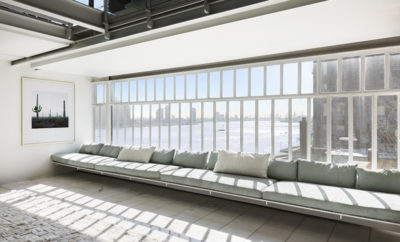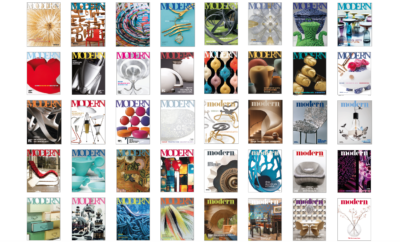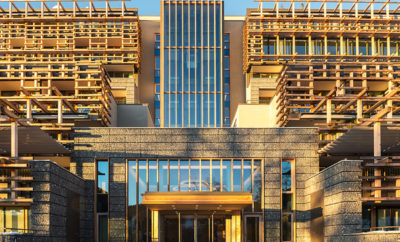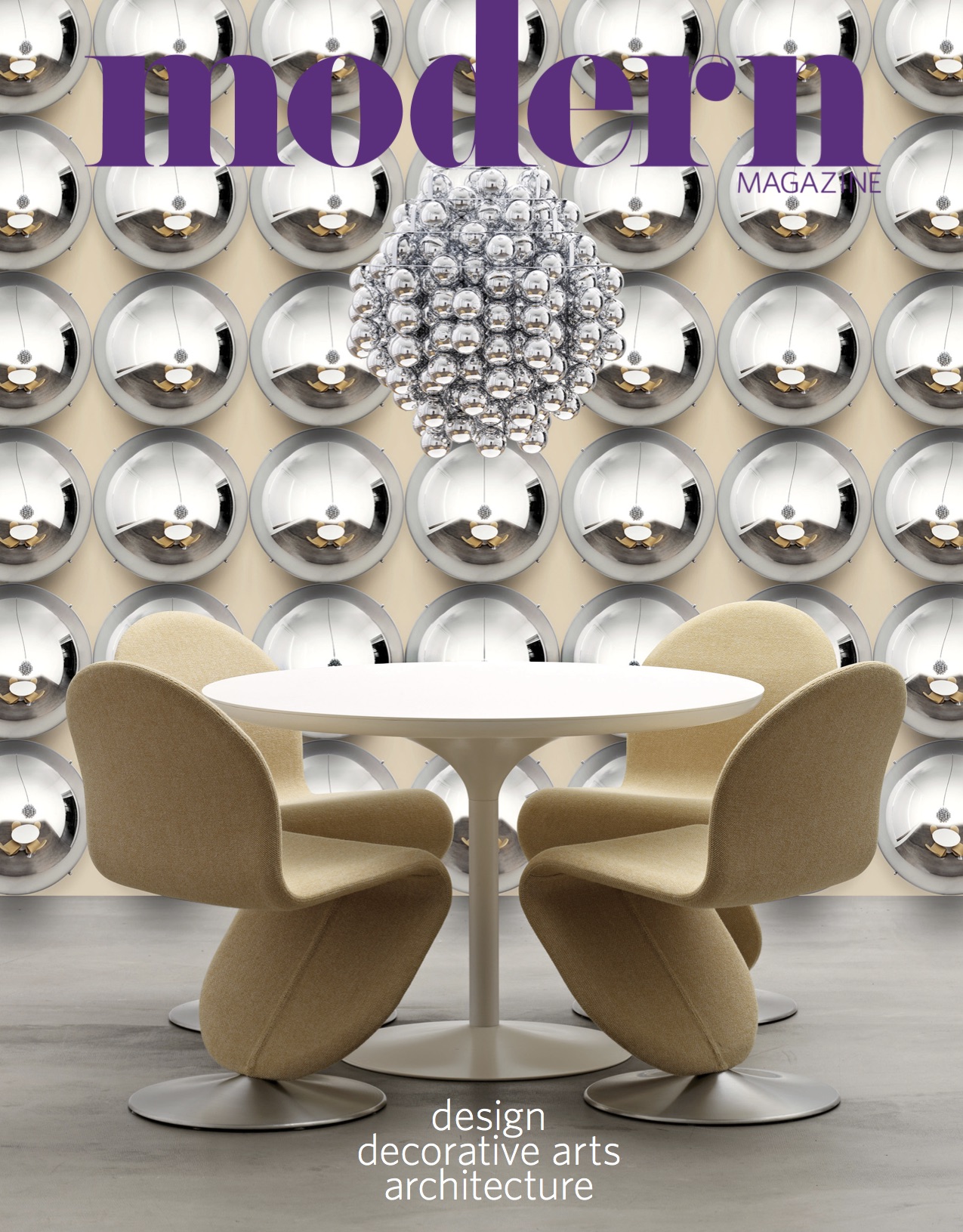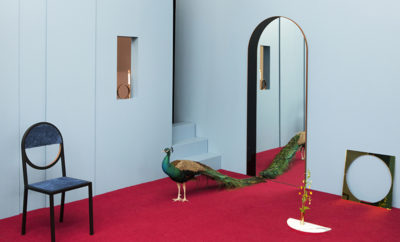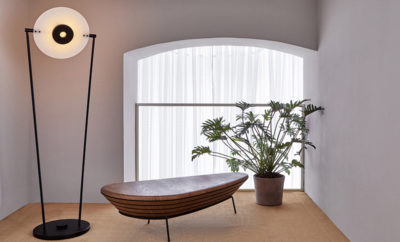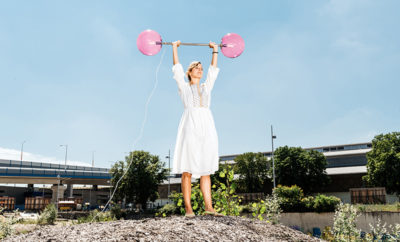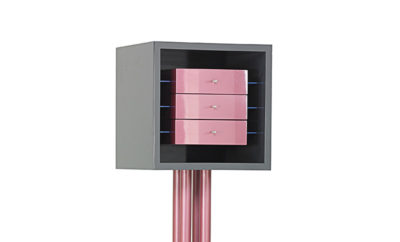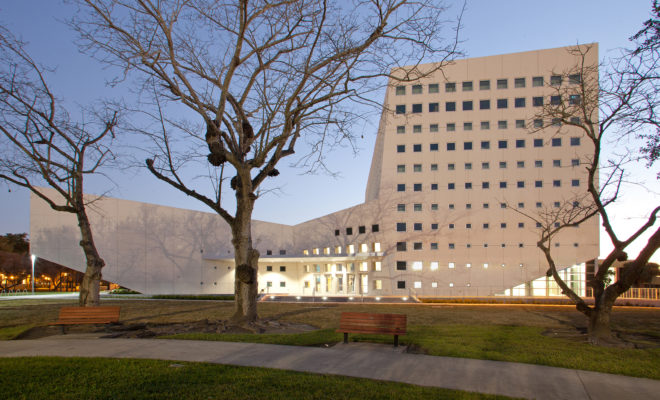 © ROBIN HILL
© ROBIN HILL
Architecture
Radical Mainstay
ARQUITECTONICA (RIZZOLI) COULD VERY WELL have been named Having It All. Like Helen Gurley Brown’s early 1980s best seller, the recently published monograph on Miami architectural firm Arquitectonica phrases the pursuit of love, success, sex, and money in terms that design practitioners can appreciate. With a reach that takes in fifty-four countries, the company boasts a long list of conceptually compelling projects, as well as substantial clout in the real estate world. Yet, whereas Gurley Brown’s vision of female empowerment has been discredited in the four decades since it came out, Arquitectonica—which marks its fortieth anniversary with this book—continues to represent the gold standard for creative-industry fulfillment. On the occasion of the monograph’s release, MODERN contributor David Sokol spoke with principals Bernardo Fort-Brescia and Laurinda Spear about their secrets to longevity:
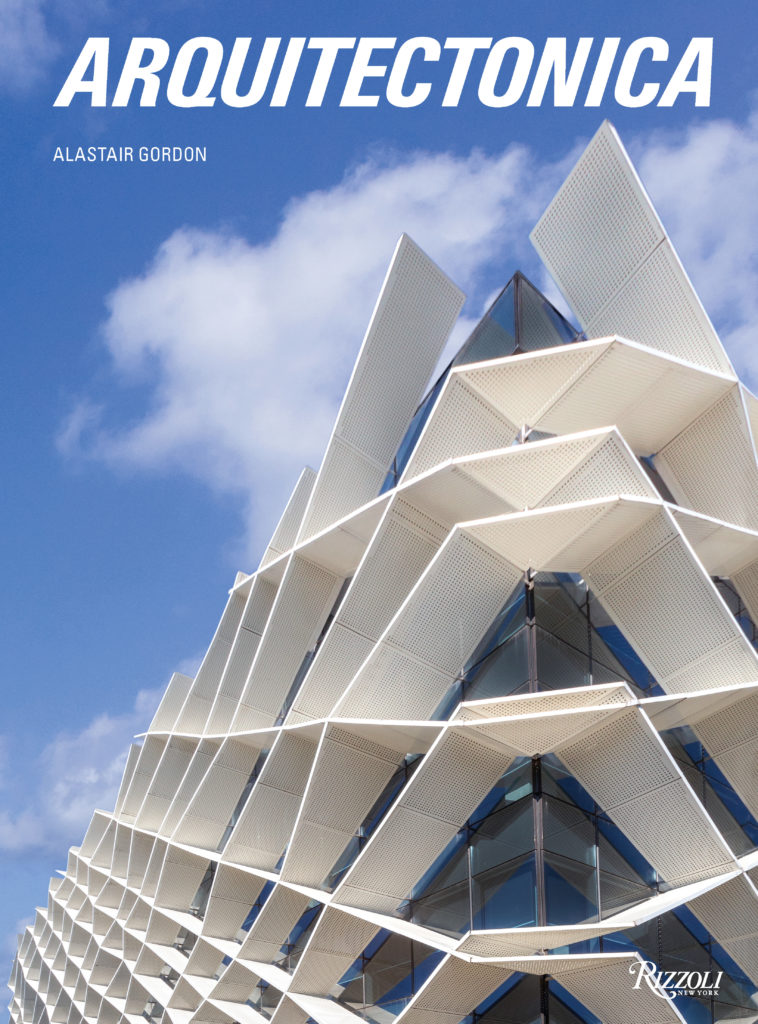
Arquitectonica
By Alastair Gordon
(Rizzoli, $85)
David Sokol/MODERN MAGAZINE: This book is monumental in terms of size and decades spanned.
Bernardo Fort-Brescia: Our practice started when we were straight out of school and barely twenty-four years old, and the firm is now forty years old. So, part of the size of the book has to do with explaining the chronology; another part of it is having the right mix of projects that convey the breadth of the practice, even if some projects are more glamorous than others. We probably could have done a book every five years.
DS: Could you say more about that right mix of projects?
BF-B: Not every building has to be a landmark. I hate this “iconic” thing—this notion that every successful building stands out. There are some buildings that we intentionally create as background buildings. They don’t have to be loud and expressive if it’s not the right moment and the right place for that.
DS: Does concern for appropriateness land you in the category of corporate architect?
BF-B: I don’t think people think of us as a very large firm, because we are still essentially run by Laurinda and myself and the close group with whom we work. In that sense, we are not one of those behemoths with one hundred partners that are the result of mergers and acquisitions.
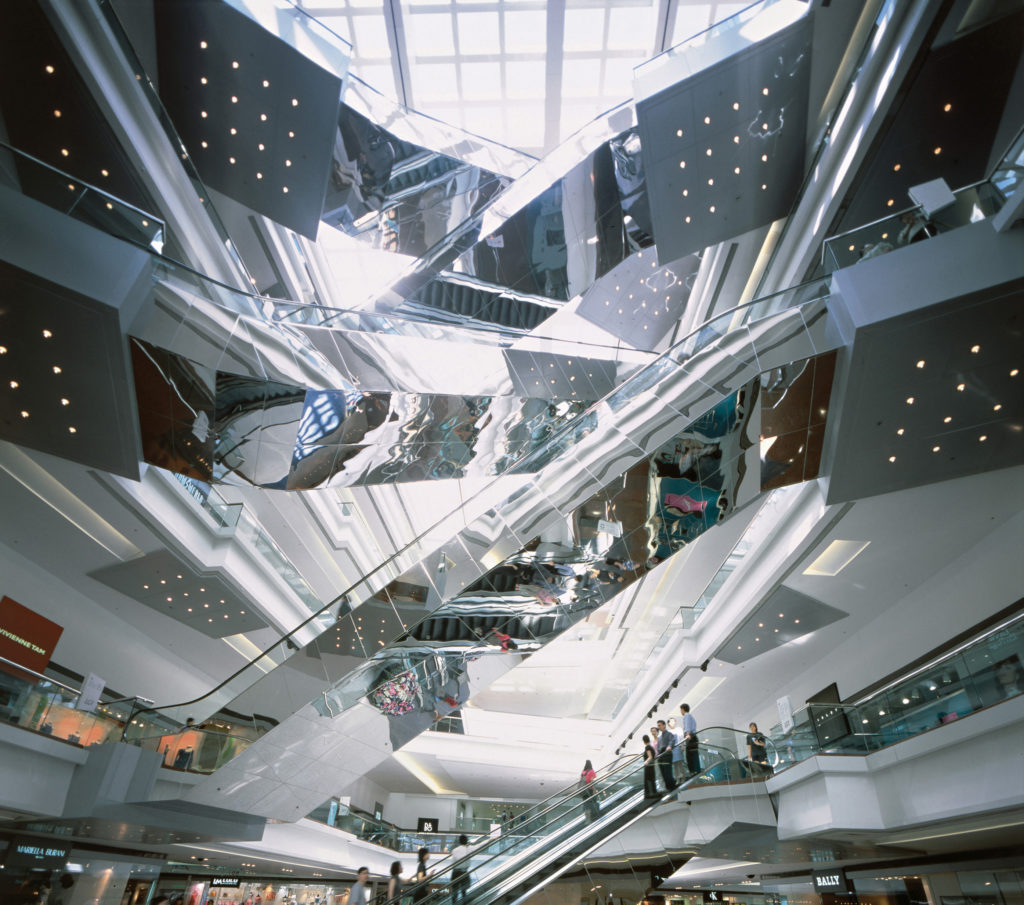
Festival Walk, designed by Arquitectonica, in Hong Kong, was completed in 1998. COURTESY SWIRE PROPERTIES / FRANK FISHBECK PHOTO
DS: But at the same time, the volume and geographic reach of your portfolio is equivalent to that of a large company.
BF-B: We have survived categorization. In a way, we love it because it would be very boring if we were doing one building type or one scale of building. To some extent, not being so visible and not self-promoting too much allow us that flexibility.
DS: The monograph texts by Alastair Gordon and Ian Volner capture the back-and-forth between corporate and boutique mind-sets—in part by giving as much prominence to your first completed commission, the Pink House, as to your more recent skyscrapers. How much has Arquitectonica evolved since its early experiments in deconstruction?
Laurinda Spear: As I became increasingly concerned about human impact on the natural environment, my approach to design has evolved. I felt a mandate to carefully consider how to mitigate the effects of buildings and designed landscapes. I think that sensitive site development can help offset [buildings’ consumption of] energy and natural resources.
BF-B: I think our approach has been rather consistent. There’s a certain romance and a certain sensuality we like to inject into our work—that’s the spice that makes it a little bit off from the norm—but when we start designing a project, there should be no preconception about color, form, depth of space, or anything.
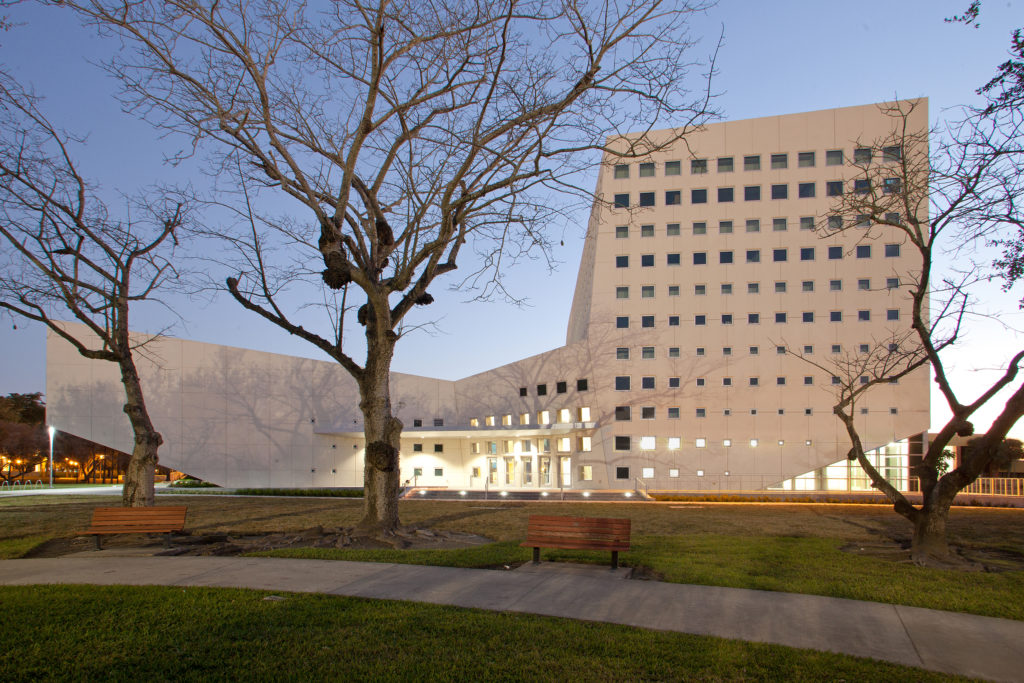
The Florida International University School of International and Public Affairs (FIU SIPA) building, completed in 2010. © ROBIN HILL
DS: It may be impossible to choose a favorite design, so could you cite one project in this book that is emblematic?
LS: Each project does have its own unique challenges and rewards. Brickell City Centre in Miami’s urban core provided an opportunity to design and test ideas of how landscape and natural elements could be integrated into dense urban development at different scales and elevations. Miami’s native landscapes have been impacted by development, and Brickell City Centre provided a platform to reintroduce these landscapes into the urban core.
BF-B: The client had hired us to do a mall, and the expectation here was of an air-conditioned interior space—a single building that, as far as we were concerned, is not part of the neighborhood. We felt this was not the correct model in this part of the city, that this was a place to look for a different experience. It’s calculated to catch the breezes—pirates and galleons came through Miami because of our trade winds—and collect water. With multiple uses and a ten-acre park on its roof, it’s a downtown place for people to congregate and see each other.
DS: And this illustrates your no-preconceptions method, as well?
BF-B: We think first in terms of what we’re trying to do with a building. Then we’re trying to make that structure ecological or sustainable. Then the building takes on an expression, but that expression always follows the original content and ideology.
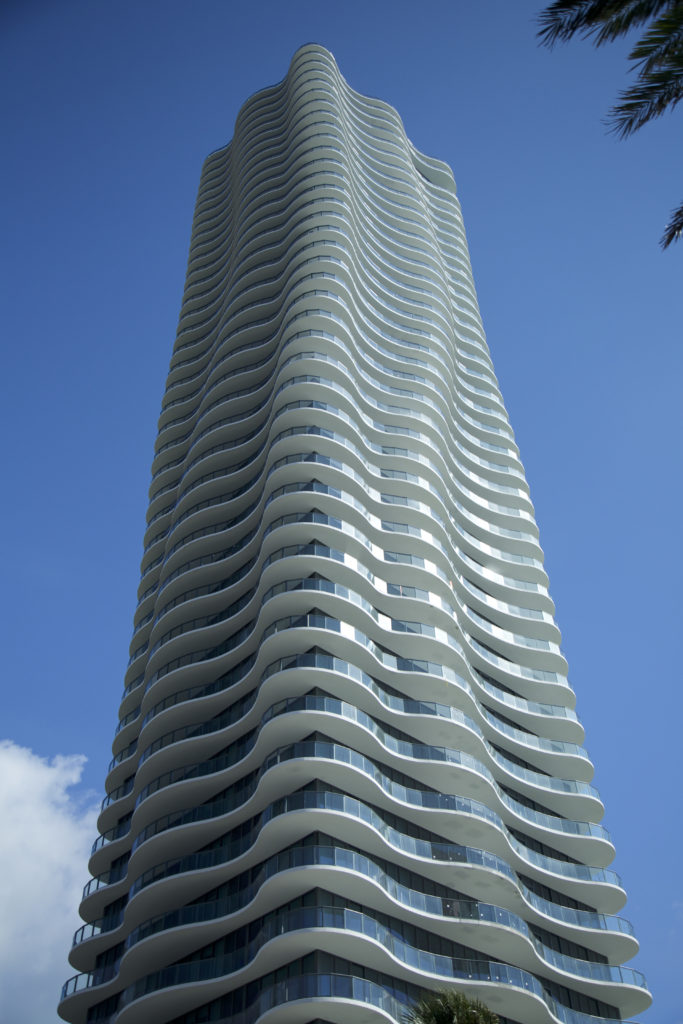
Arquitectonica’s residential tower Regalia at Sunny Isles Beach in Miami, Florida, opened to the public in 2014. © KEN HAYDEN PHOTOGRAPHY
DS: Your children Raymond and Marisa joined the firm several years ago, and they are shouldering increasing responsibility there. Has that influenced Arquitectonica’s evolution too?
BF-B: We never had a plan for the kids to work in our firm. But they are really part of the team, they are equals with a lot of team leaders who deal with me and Laurinda on a fairly regular basis. They also bring another perspective. We can’t get into the minds of a new generation that easily. We can read about it and talk to people, but it’s not the same thing as living it. When you can infuse the experiences of the older generation with the ideas of a new generation, you get a better result.


